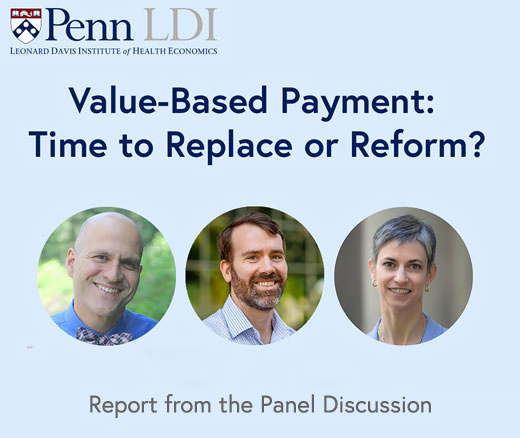
Hospital Mergers Don’t Make Care Better—They Just Make It Pricier, LDI Fellows Say
A New Review Finds Hospital Mergers Raise Prices Without Improving Care, and Urges Regulators to Stop Accepting Quality Claims to Justify Consolidations
Health Care Payment and Financing
Blog Post

As under-resourced hospitals disproportionately serve low-income patients, understanding disparities in hospital wealth is crucial to ensuring equitable access to high-quality care. A new study by LDI Senior Fellow Paula Chatterjee and colleagues sheds light on a largely overlooked aspect of hospital financing: assets, including financial resources such as deposits and investments, and capital resources such as property, buildings, and equipment.
While health care finances often center on patient care revenue, this first-of-its-kind study finds that most of the growth in hospital assets between 2000 and 2019 came from other sources—raising questions about how financial advantages accumulate and persist in the U.S. health care system.
Hospital assets are essential for delivering adequate care, but their disparate accumulation may reflect “a tale of two hospitals,” in which well-resourced hospitals continue to build resources while under-resourced hospitals struggle financially and are at perennial risk of closure. These patterns may reflect broader trends in market consolidation—leading to reduced competition, higher costs, and little to no improvement in patient outcomes.
Using data from the Centers for Medicare & Medicaid Services and the American Hospital Association Annual Survey, the researchers conducted a decomposition analysis of hospital finances from 2000 to 2019. They found total hospital assets more than doubled, growing from $750 billion to $1.6 trillion. Yet this increase wasn’t shared evenly: Hospitals that started wealthy became more so, while asset-poor hospitals saw minimal growth.
Crucially, most of this growth was not explained by patient revenues. Instead, the most significant contributors to asset growth may include sources such as real estate holdings, hospital system consolidation, and other unmeasured forms of investment, capital, or systemic advantage. Beyond specific wealth-aggregating actions of hospitals and health systems, the broader policy landscape for hospital financing may also have made it easier for some hospitals to build wealth than others. For example, an IRS ruling in 1998 allowed nonprofit hospitals to establish large for-profit subsidiaries for the first time and may have contributed to some of the trends observed in the study.
“Over half of the asset growth was unexplained by standard financial metrics, suggesting the drivers may include economic strategies like for-profit subsidiaries or stock market investments,” Chatterjee said. “Given the current limitations of available data, these mechanisms remain difficult to study.”
The study suggests the U.S. is creating a two-tier system where wealthy hospitals can leverage their existing assets to accumulate even more—regardless of patient care revenue—while safety-net and rural hospitals are at risk of falling further behind. For example, expensive services such as advanced imaging and surgery are more likely to be found in asset-rich hospitals. These facilities are disproportionately located in wealthier urban areas and tend to be less accessible to minority populations.
If left unaddressed, these disparities in hospital wealth risk entrenching and worsening health inequities through resource allocation—particularly in under-resourced communities that already face barriers to care.
“Policymakers must look beyond conventional metrics like patient revenue and operating margins and consider the full scope of hospital wealth,” Chatterjee said. “Improving financial transparency and developing more comprehensive regulatory tools could help level the playing field.”
In short, the rich hospitals appear to be getting richer—not just by seeing more patients, but also through financial pathways often hidden from public view. To build a more equitable health care system, federal and state policy must evolve to create the transparency and oversight needed to ensure safety-net and rural providers have the resources to remain financially viable and compete in markets, and to curb unchecked asset growth among wealthy hospitals.
The study, “What Explains the Growth in Hospital Assets from 2000 through 2019? A Decomposition Analysis,” was published on February 5, 2025, in Health Affairs Scholar. Authors include Stephanie Teeple, Caroline Andy, William L. Schpero, and Paula Chatterjee.


A New Review Finds Hospital Mergers Raise Prices Without Improving Care, and Urges Regulators to Stop Accepting Quality Claims to Justify Consolidations

CMS’s Main Risk Adjustment Method Underestimates Rural Patients’ Health Risks, LDI Fellows Show, Potentially Reducing Access to Care in the Heartland

Penn LDI Debates the Pros and Cons of Payment Reform

Moving from Fee-for-Service to Risk-Based Contracts Hasn’t Dramatically Changed Patient Care, Raising Questions About How to Make These Models More Effective

Government Regulatory Power Wanes as Power Accrues to Courts and Corporations

The Wharton Professor Produces a Compendium of Economics Wisdom for Health Care Pros